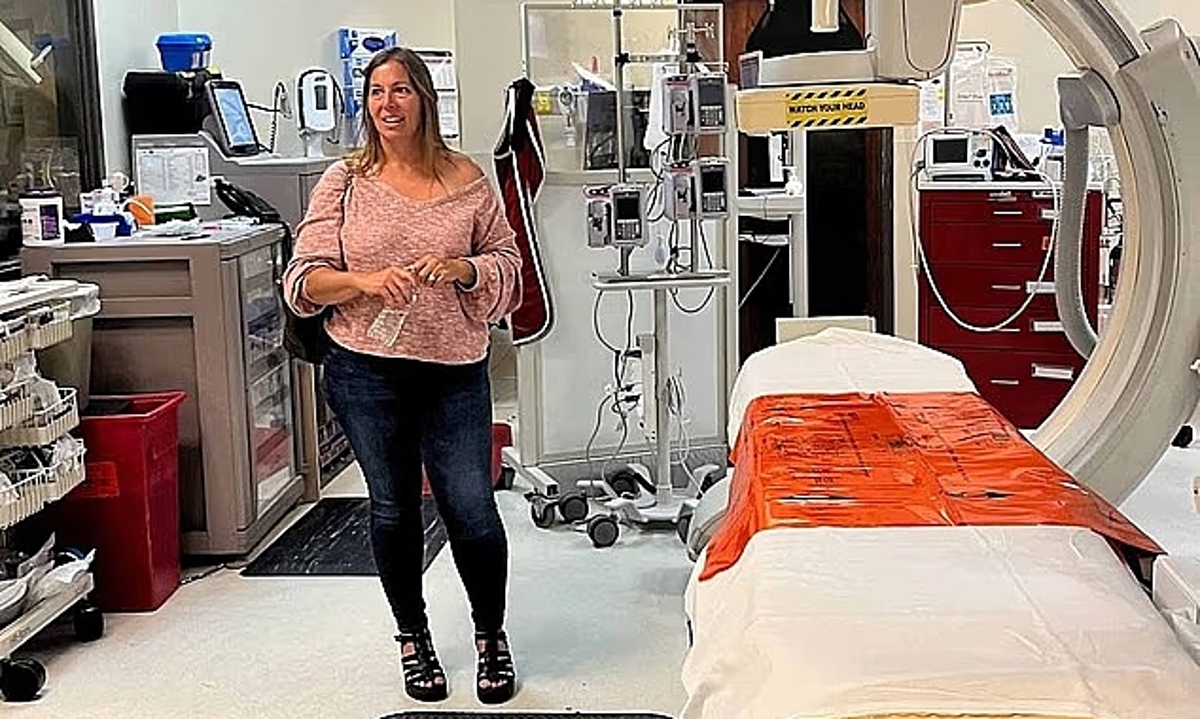In April 2022, Oklahoma mother of three, Jenna Tanner, collapsed after experiencing chest pain and shortness of breath. Initially dismissing her symptoms as the flu, which her children had recently recovered from, Tanner's condition was far more serious. She was suffering a widowmaker heart attack, caused by a complete blockage of the left main coronary artery (LMCA), the heart's largest artery. This type of heart attack has a survival rate of only 12%.
"It felt like an elephant was sitting on my chest. I knew immediately something serious was happening," Tanner recalled. She vividly remembers the sensation of leaving her body, floating in space, and drifting towards a vibrant, sparkling nebula.
"There were no bad things. I just thought about all the relationships I’ve ever had, with people and places. They were all beautiful things," she said.
Fortunately, Tanner's family quickly called 911. First responders arrived within 13 minutes and performed CPR, saving her life. Tanner's cardiologist admitted that her case was the most extraordinary he had encountered in his 20-year career, spanning over 4,000 cases.
"I didn't even think anyone could survive something like that," he said.
At the hospital, doctors implanted a heart pump and inserted a stent to widen the narrowed artery, restoring blood flow to Tanner's heart. This procedure typically requires bypass surgery. After only 10 days in the hospital, six of which were spent in intensive care, Tanner walked out unassisted.
However, recovery hasn't been easy. Tanner gained and then lost nearly 20 kg and developed post-traumatic stress disorder. She currently takes 13 medications to manage her symptoms.
 |
Jenna Tanner at the hospital. Photo: Jenna Tanner |
Jenna Tanner at the hospital. Photo: Jenna Tanner
The local fire department, the first to arrive at the scene, provided crucial initial care. Their swift and effective response earned them an award for saving Tanner's life.
A widowmaker heart attack occurs when a blood clot completely blocks the LMCA. Within minutes, this can cut off the heart's oxygen supply, causing heart tissue to die. Even with prompt treatment, tissue damage from this type of heart attack can be irreversible, impacting long-term heart function.
Researchers are now urging updates to current medical guidelines to enable earlier detection of warning signs, potentially saving thousands of lives. Tanner's case highlights the alarming rise in premature deaths from heart attacks and strokes.
Last year, the UK experienced its highest heart disease death rate in over a decade, with approximately 420 working-age people dying weekly, totaling 21,975 deaths annually. In the US, heart disease remains the leading cause of death, claiming nearly 1 million lives each year.
Thuc Linh (Daily Mail)












